MOHW Hospitals Upgrade Wayfinding Experience: Taipei Hospital Leads with Design Innovation
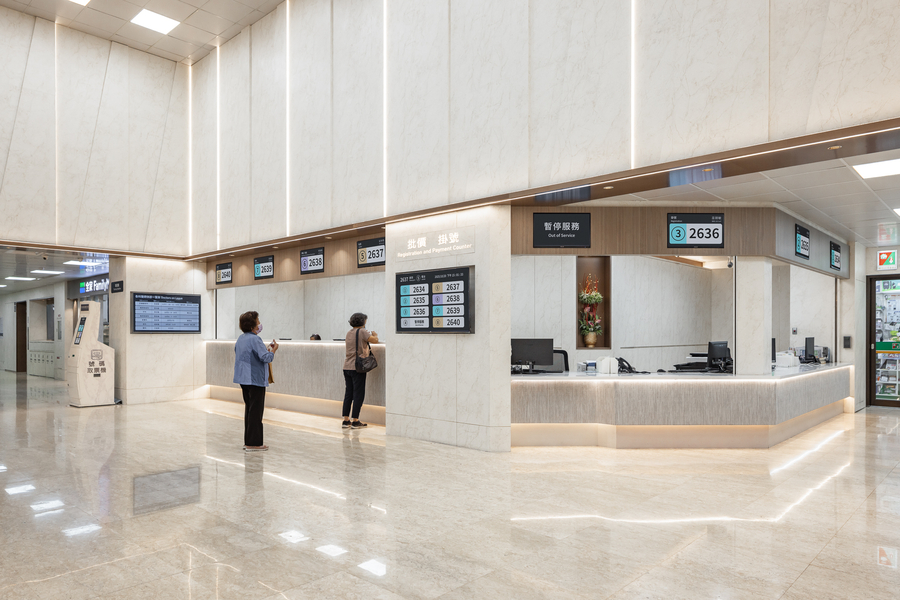
▲ Upgraded wayfinding experience at Taipei Hospital offers clearer guidance for visitors.
To enhance patient convenience and peace of mind, the Taiwan Design Research Institute (TDRI), in collaboration with the Hospital and Social Welfare Organizations Administration Commission, Ministry of Health and Welfare, and Taipei Hospital, has introduced a design-driven service innovation project. Taipei Hospital is the first to adopt this new approach. The two parties jointly announced today (Oct. 20) the results of the signage optimization project, which integrates the hospital’s complex wayfinding systems to create an environment where routes are “easy to understand and easy to find.” The project also serves as a model for other MOHW hospitals to follow.
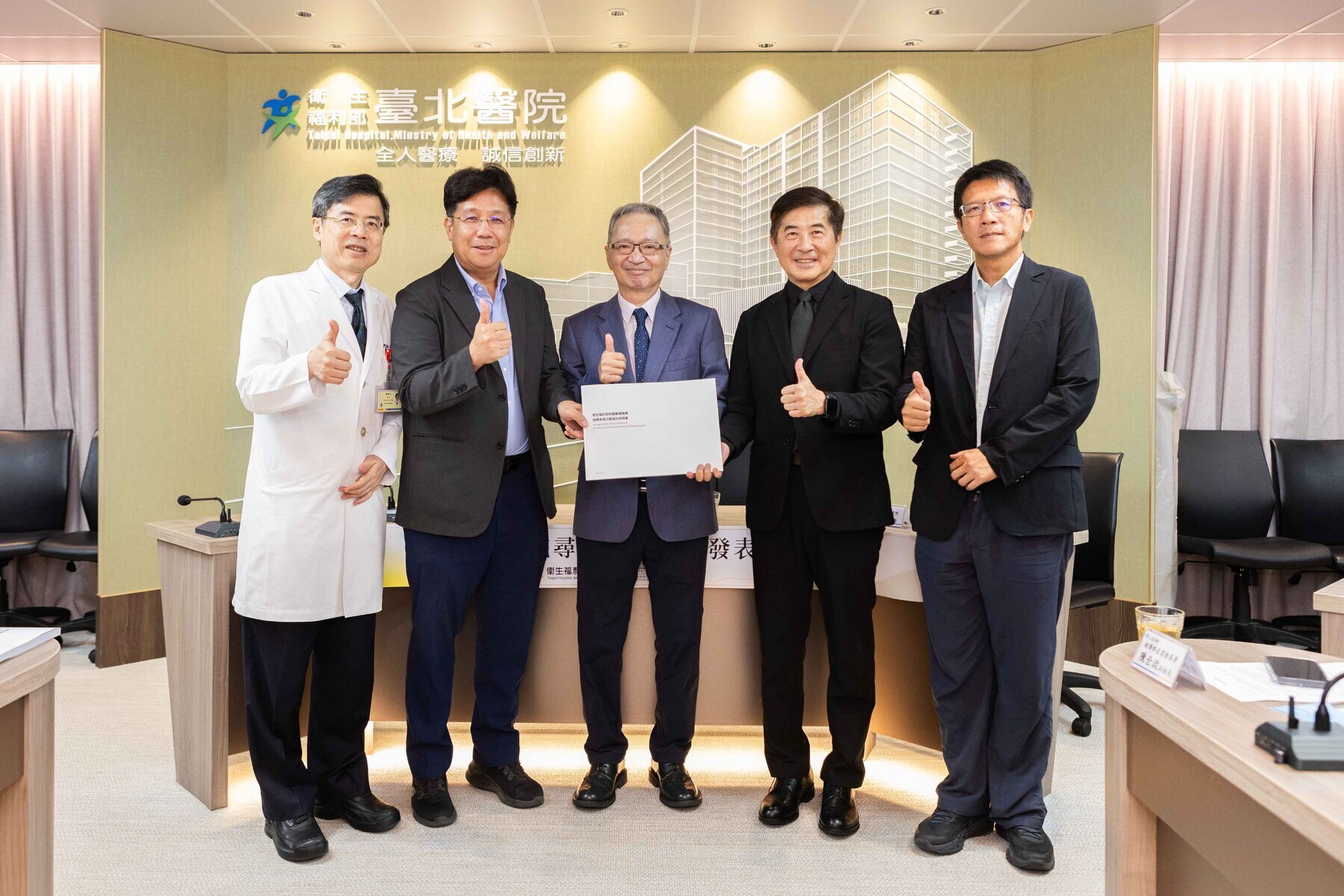 ▲ The Demonstration Design Handbook was officially presented to the Hospital and Social Welfare Organizations Administration Commission for broader application. (From left: Shun-Ping Cheng, Superintendent of Taipei Hospital; Ching-Feng Lin, Executive Director of the Hospital and Social Welfare Organizations Administration Commission, Ministry of Health and Welfare; former Minister of Health and Welfare Jui-Yuan Hsueh; Chi-Yi Chang, President of the Taiwan Design Research Institute; and Chuan-Cheng Chen, Deputy Director of the Department of Industrial Development, Ministry of Economic Affairs.)
▲ The Demonstration Design Handbook was officially presented to the Hospital and Social Welfare Organizations Administration Commission for broader application. (From left: Shun-Ping Cheng, Superintendent of Taipei Hospital; Ching-Feng Lin, Executive Director of the Hospital and Social Welfare Organizations Administration Commission, Ministry of Health and Welfare; former Minister of Health and Welfare Jui-Yuan Hsueh; Chi-Yi Chang, President of the Taiwan Design Research Institute; and Chuan-Cheng Chen, Deputy Director of the Department of Industrial Development, Ministry of Economic Affairs.)
Tackling Hospital Wayfinding Challenges: Volunteers as “Human GPS”
Hospitals are highly complex environments combining medical, laboratory, and pharmacy functions. Over time, numerous signage systems have been added without unified planning, leading to visual clutter, inconsistency, and poor readability.
Field observations and interviews conducted by the design research team revealed that patients often struggle with signs that are “invisible” or “incomprehensible.” Many find it difficult to distinguish between buildings or floors, resulting in a heavy reliance on volunteers as “human GPS.” These findings highlight the urgent need for standardized design principles and maintenance mechanisms in hospital wayfinding systems.
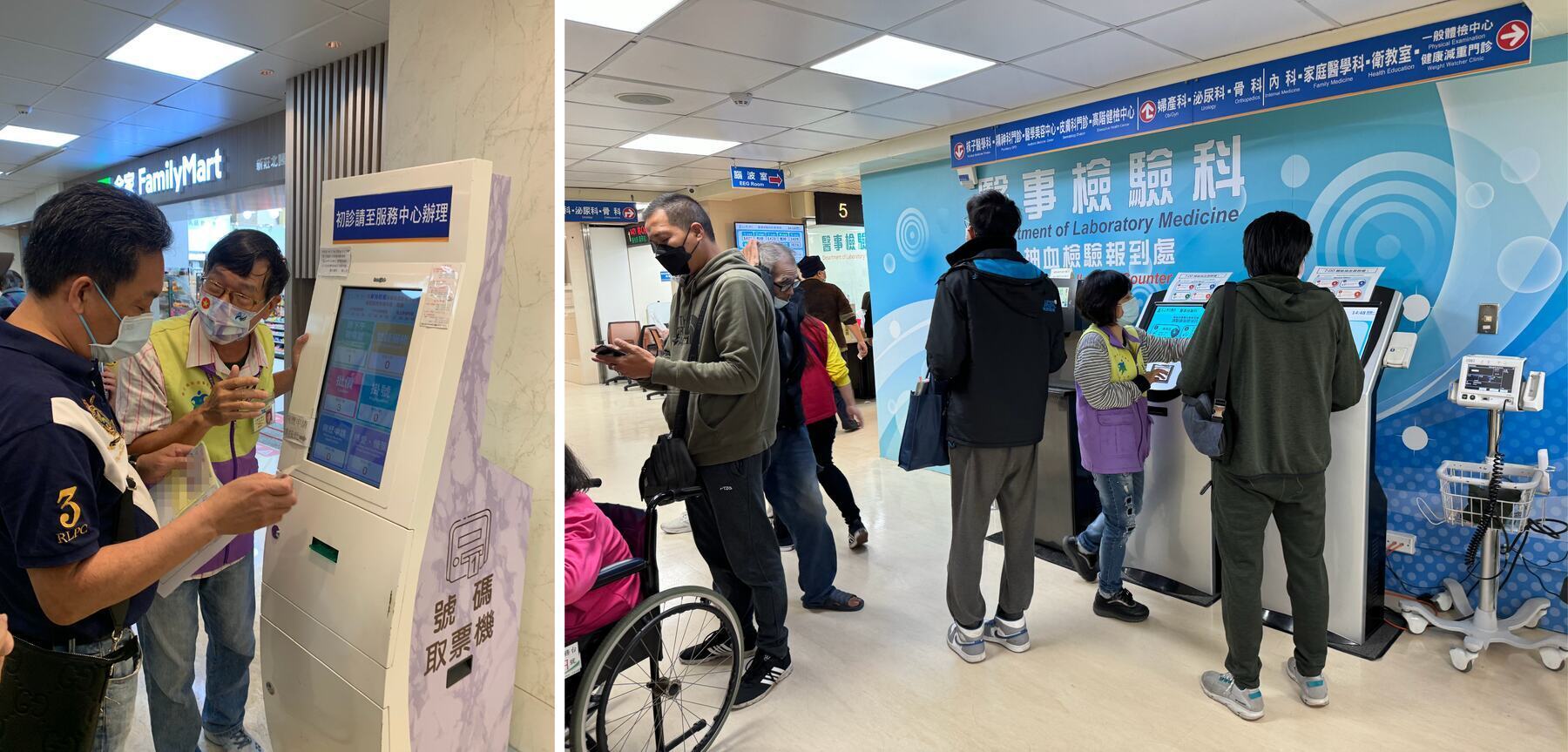 ▲ Before: Patients often relied on volunteers for navigation and kiosk operation.
▲ Before: Patients often relied on volunteers for navigation and kiosk operation.
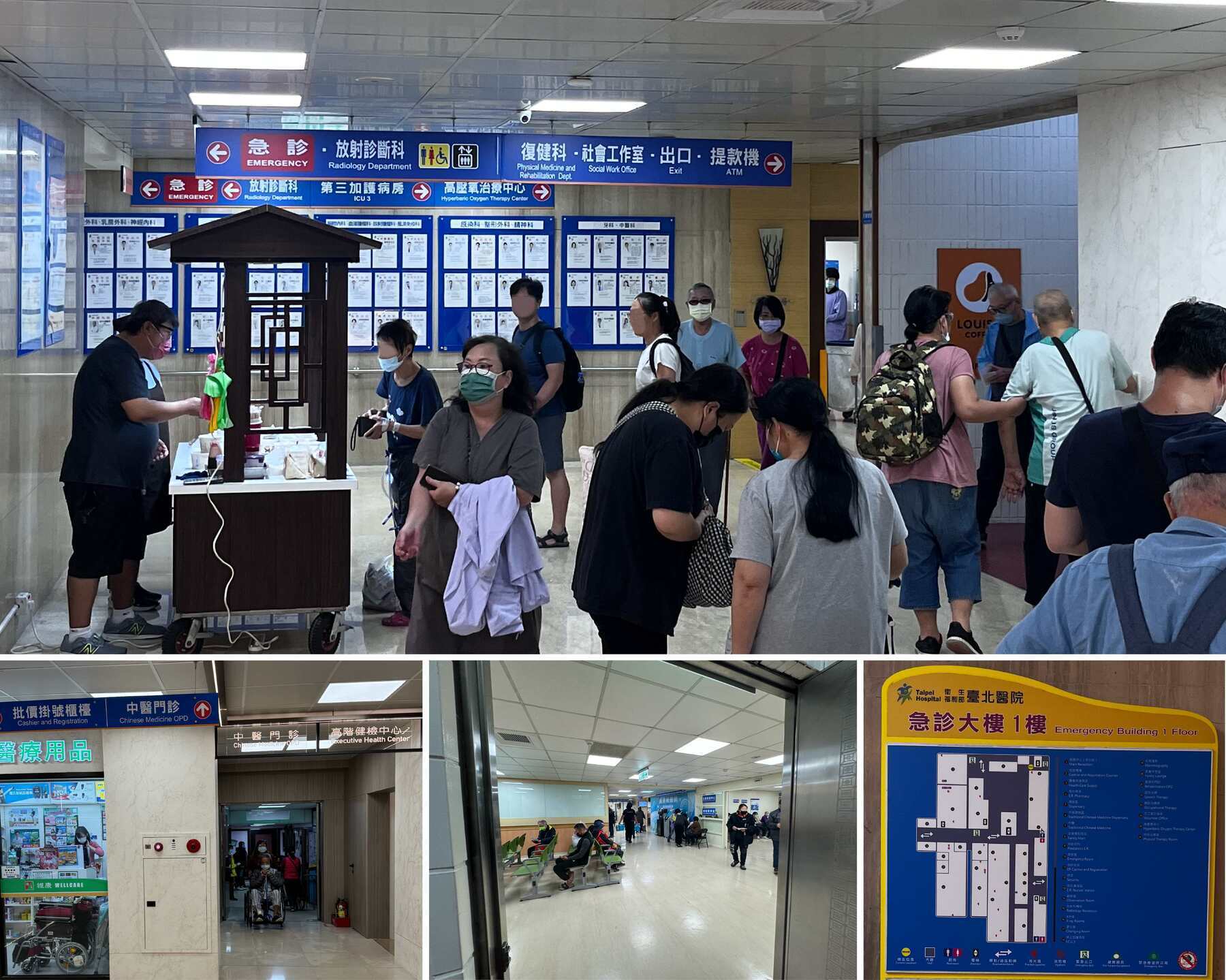 ▲ Before: Overwhelming and inconsistent information made signage difficult to see or understand.
▲ Before: Overwhelming and inconsistent information made signage difficult to see or understand.
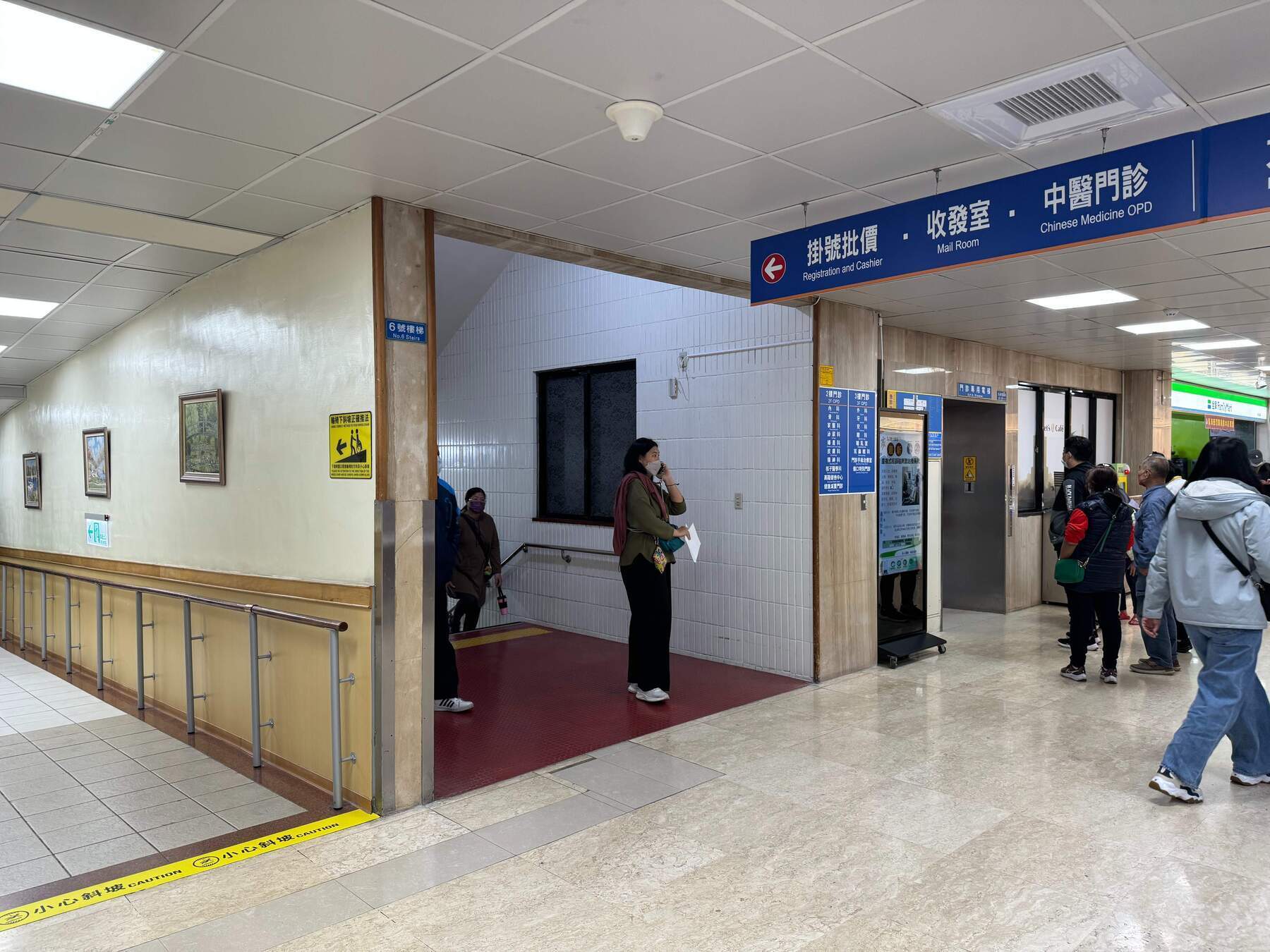 ▲ Before: Misplaced signage sometimes misled patients to the wrong floor for registration services.
▲ Before: Misplaced signage sometimes misled patients to the wrong floor for registration services.
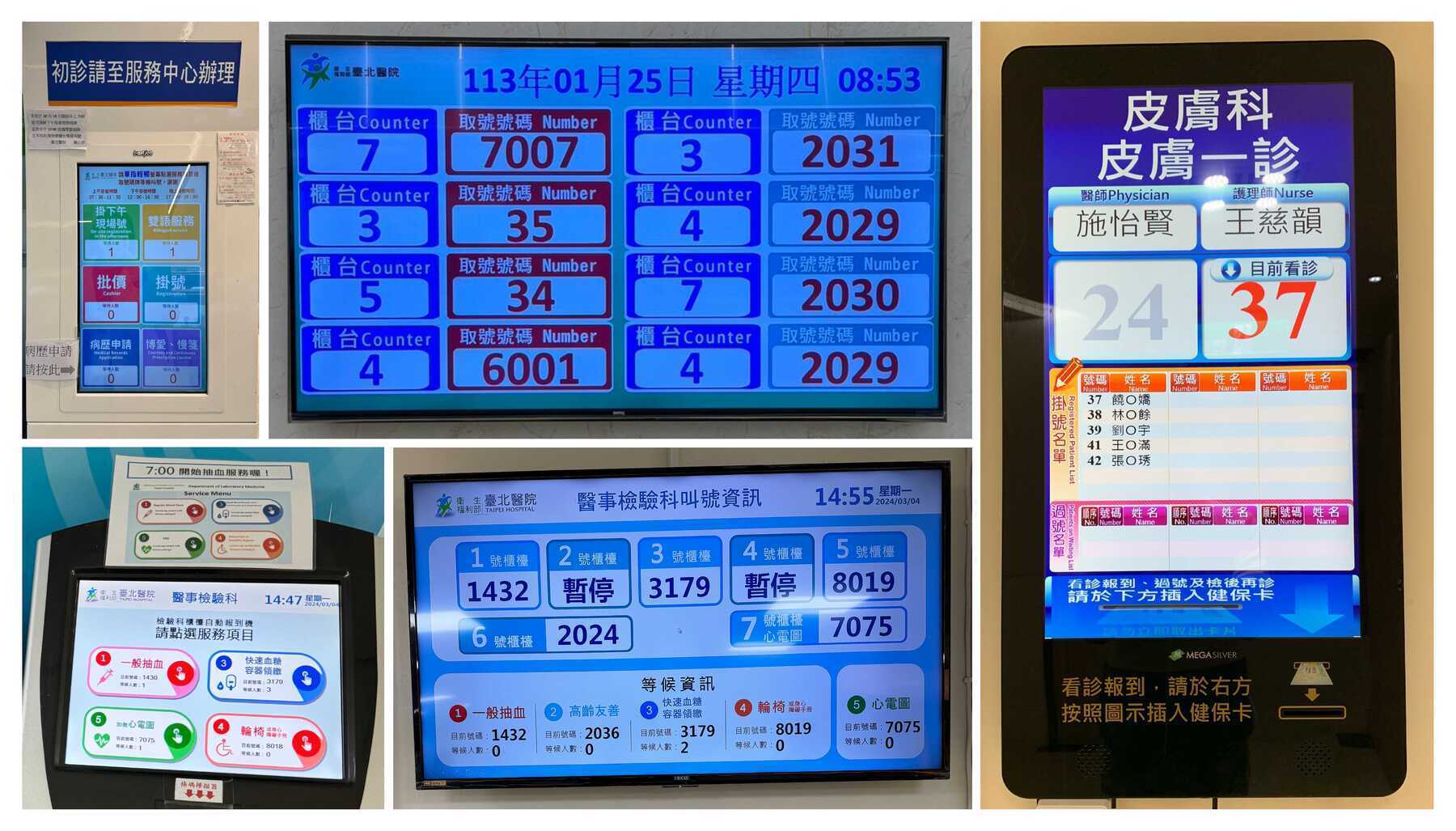 ▲ Before: Multiple information systems were maintained by separate departments, creating integration challenges.
▲ Before: Multiple information systems were maintained by separate departments, creating integration challenges.
Design Intervention: A Clear and Human-Centered Patient Experience
The project focuses on the public areas of Taipei Hospital’s first and second floors in its older building.
According to TDRI President Chi-Yi Chang, the design improvements follow the principles of “system integration, human-centeredness, and sustainability,” employing a systematic design strategy to enhance the patient wayfinding experience comprehensively. Key improvements include:
-
Visual Consistency: Rounded shapes and soft color palettes create a friendly, welcoming atmosphere.
-
Color and Zoning Logic: Dark backgrounds highlight information, while service categories are color-coded for clarity.
-
Typography: Unified fonts with size adjustments based on reading distance ensure readability.
-
Simplified Language: Complex medical terminology was replaced with simpler terms—for example, “Ophthalmology” changed to “Eye Clinic”—to help foreign users (particularly non-native English-speaking caregivers) better understand.
-
Information Interface Optimization: Layered content, simplified terms, stronger color contrast, and tactile feedback on digital screens make interactions more intuitive.
Through these improvements, Taipei Hospital now offers a clear, friendly, and reassuring environment where patients can navigate independently and confidently.
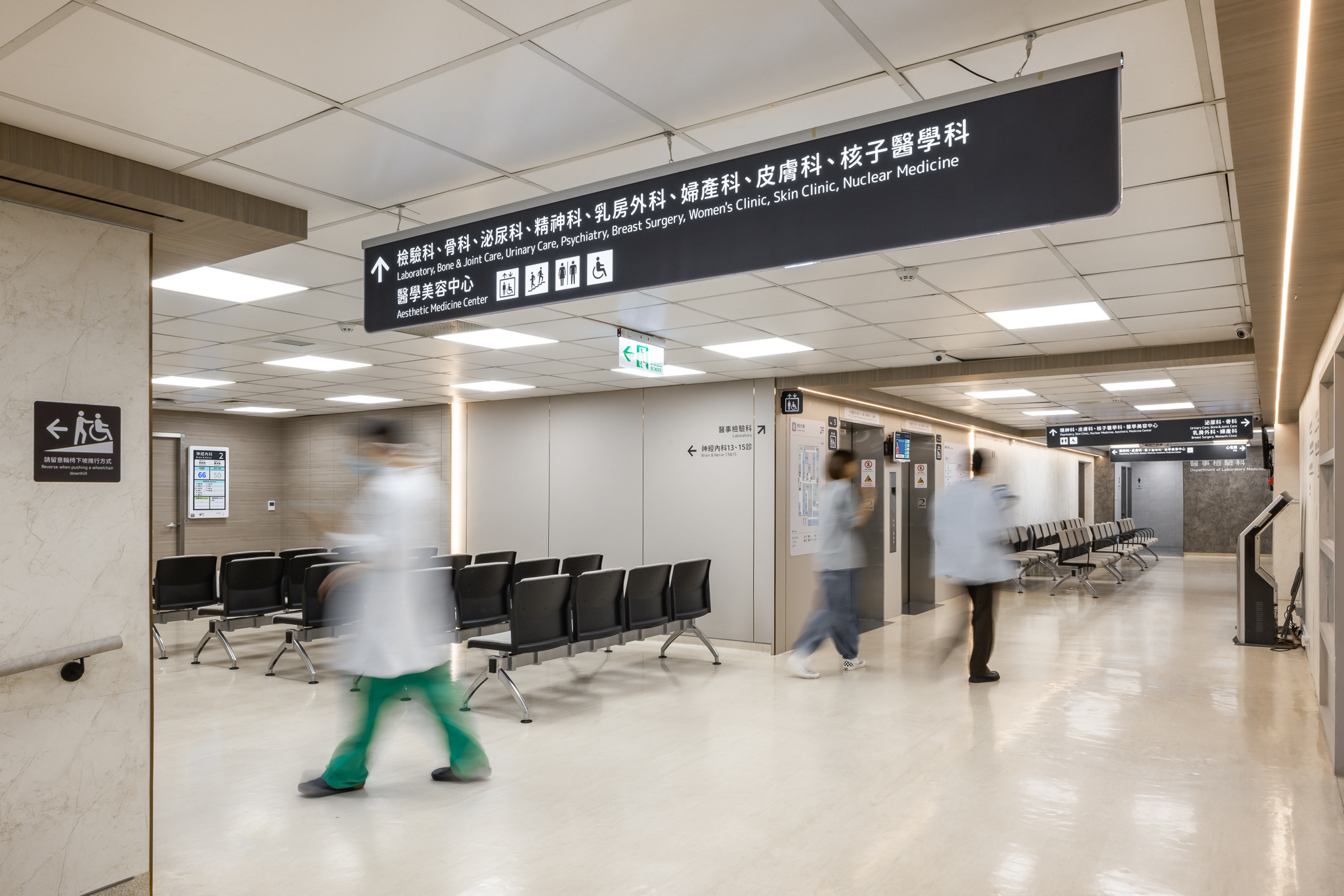 ▲ After: The first and second floors of the old building served as demonstration zones to enhance overall consistency.
▲ After: The first and second floors of the old building served as demonstration zones to enhance overall consistency.
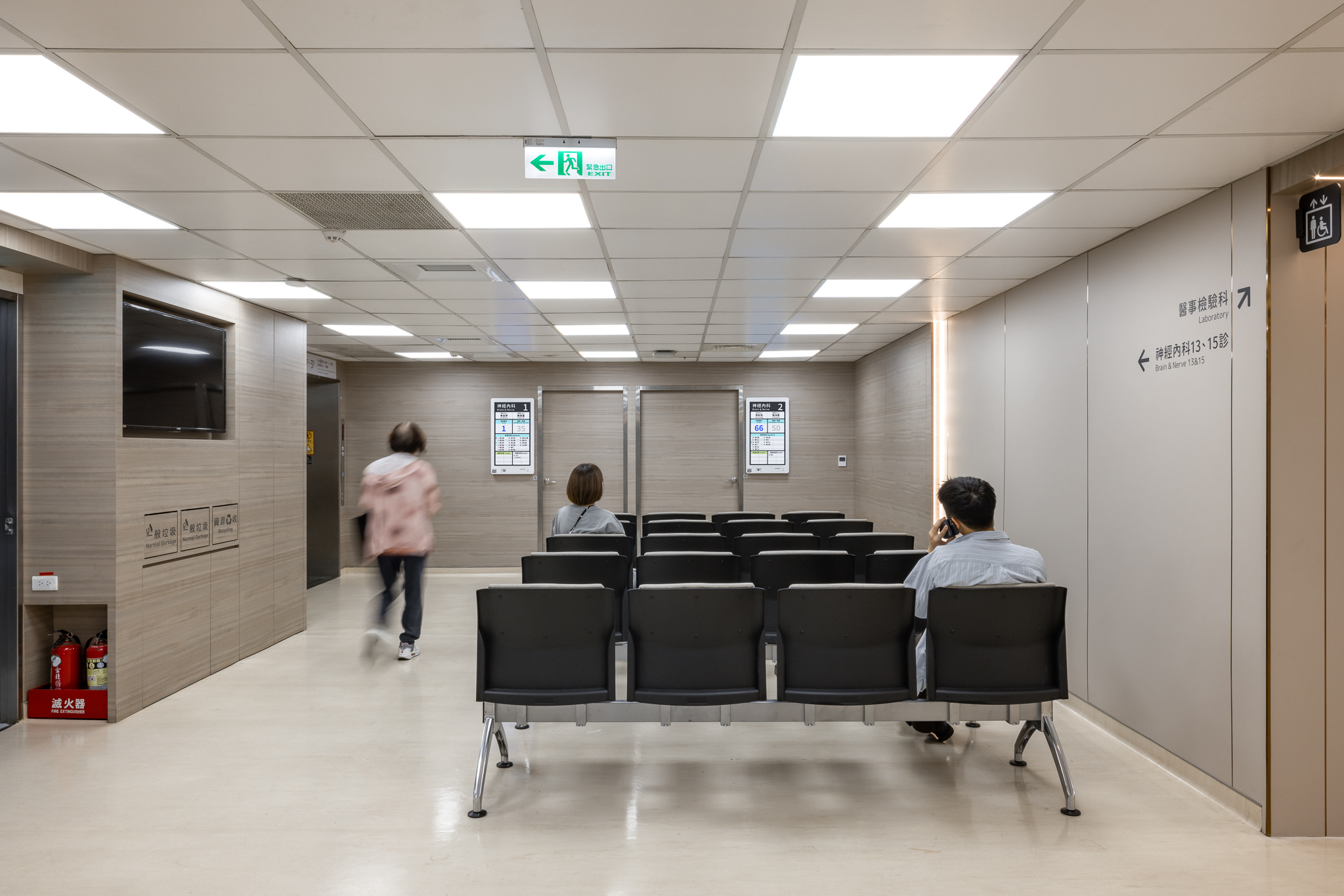 ▲ After: Clear signage creates a reassuring and navigable environment.
▲ After: Clear signage creates a reassuring and navigable environment.
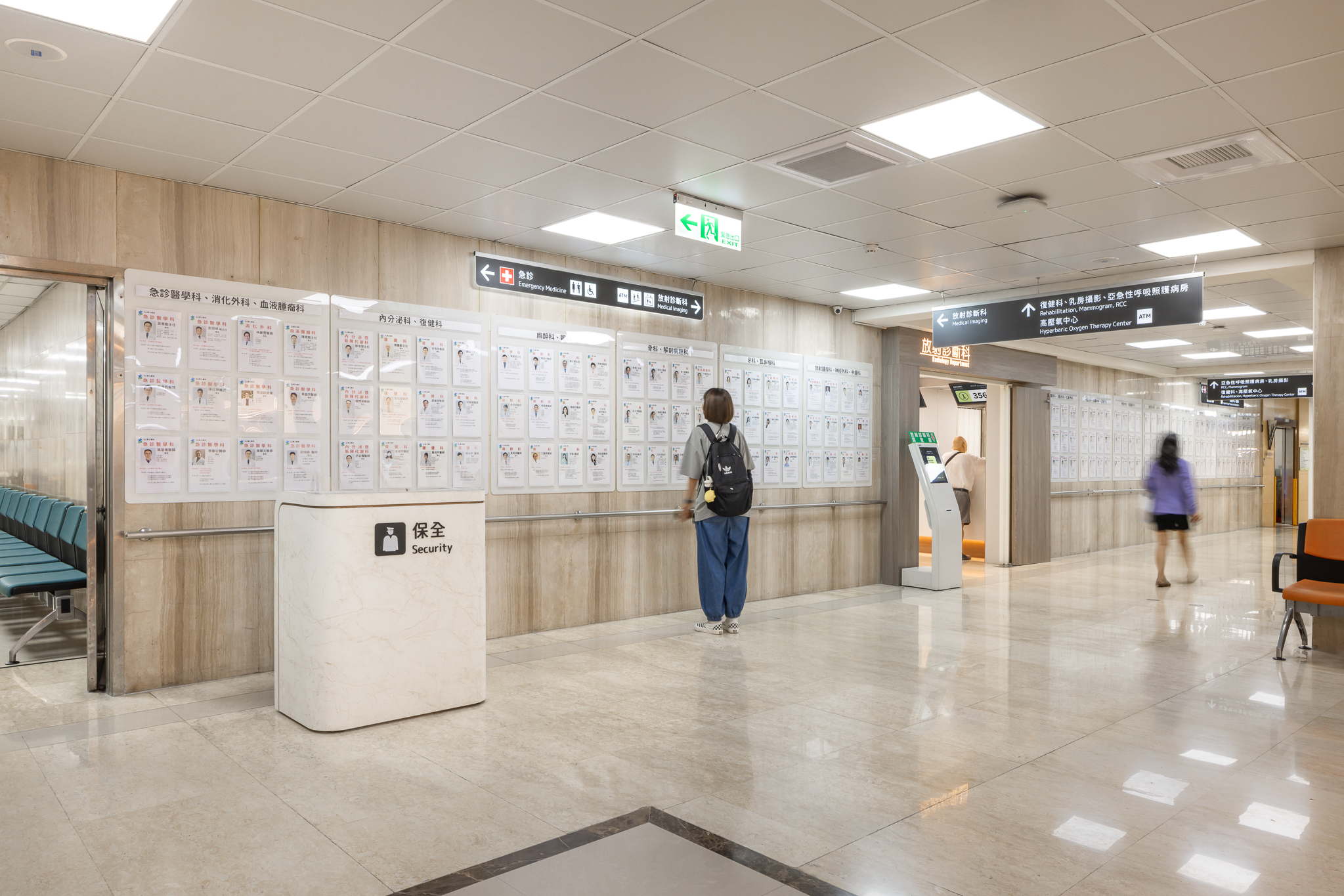 ▲ After: Illuminated panels improve information visibility and readability.
▲ After: Illuminated panels improve information visibility and readability.
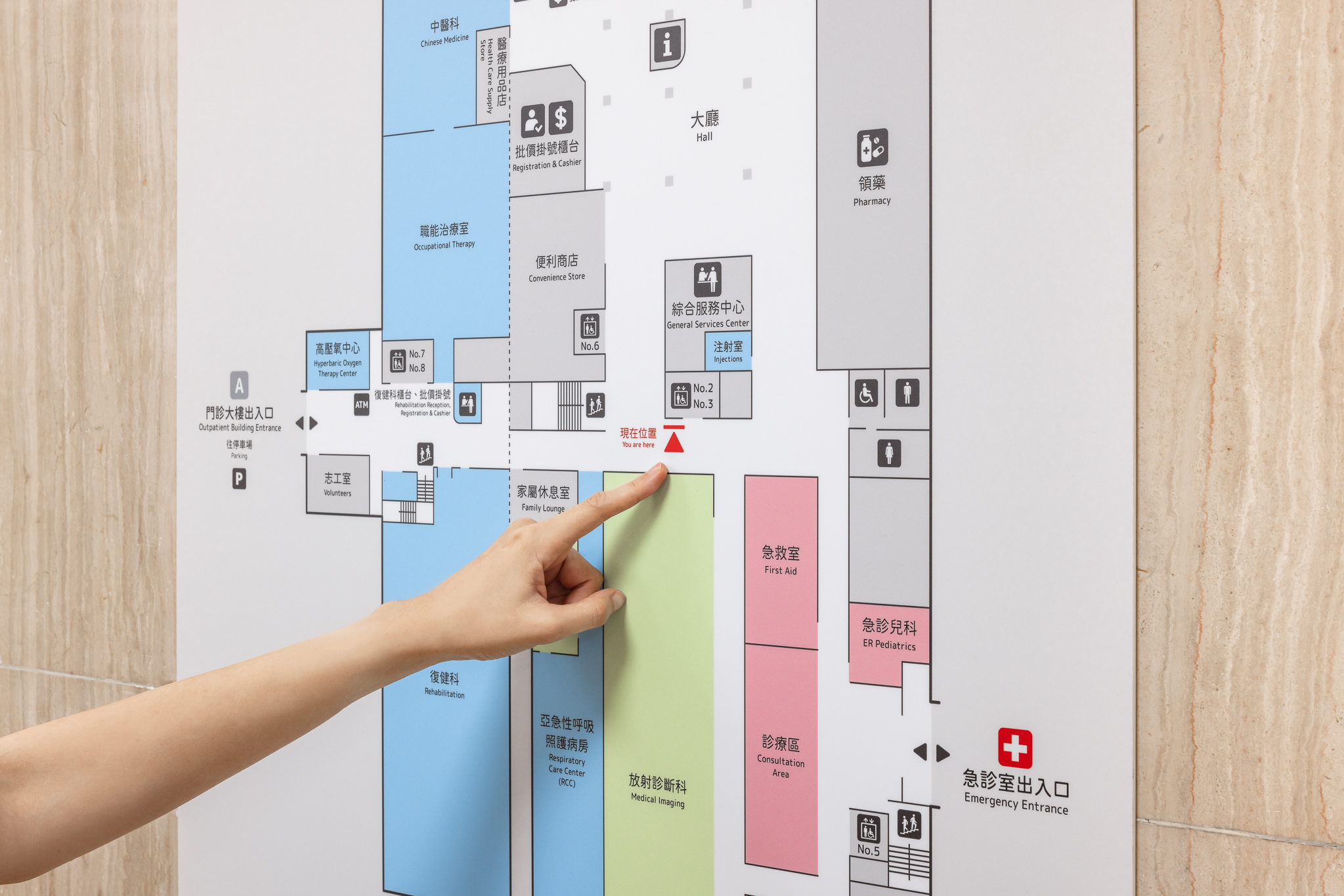
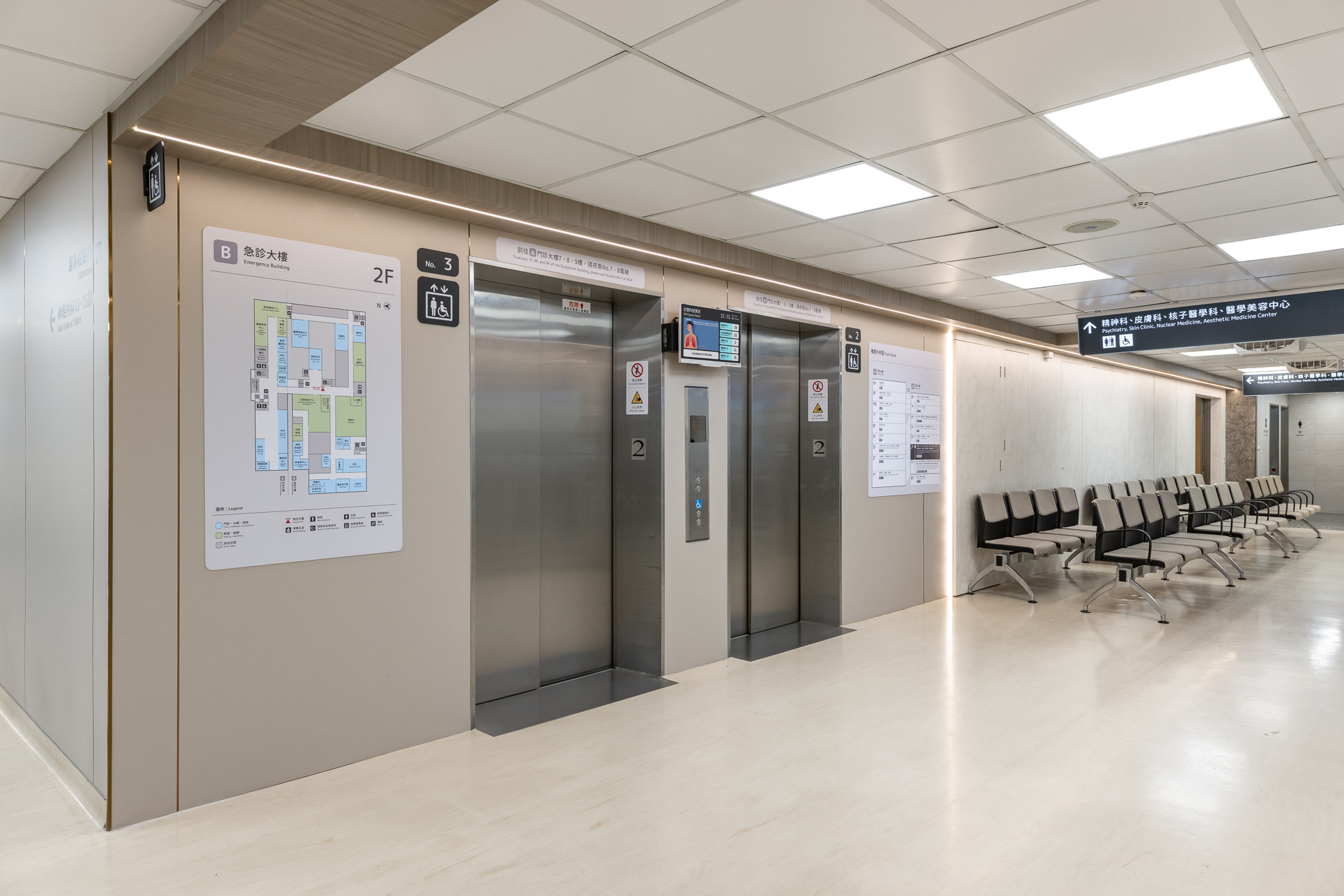
▲ After: Floor maps are installed at key points to help visitors orient themselves.
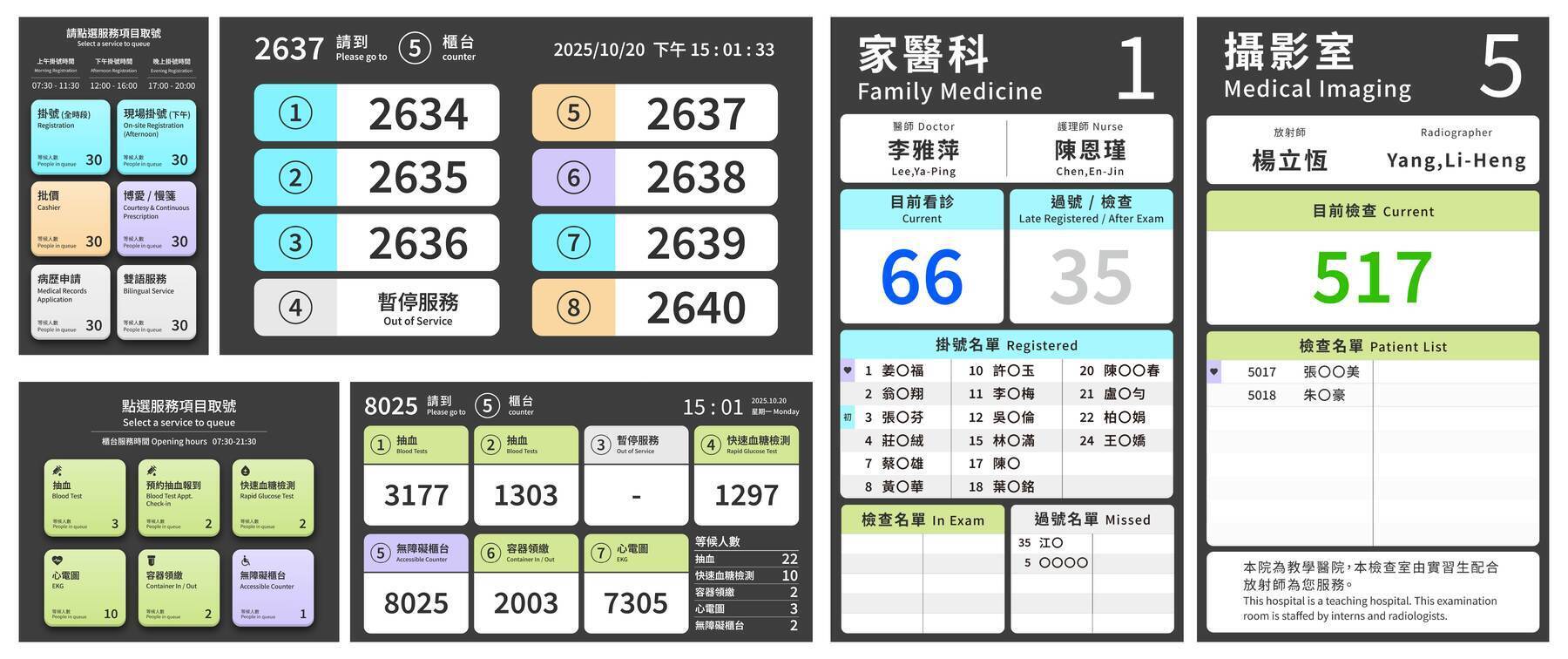 ▲ After: Information interfaces highlight key messages, simplify language, and enhance color contrast.
▲ After: Information interfaces highlight key messages, simplify language, and enhance color contrast.
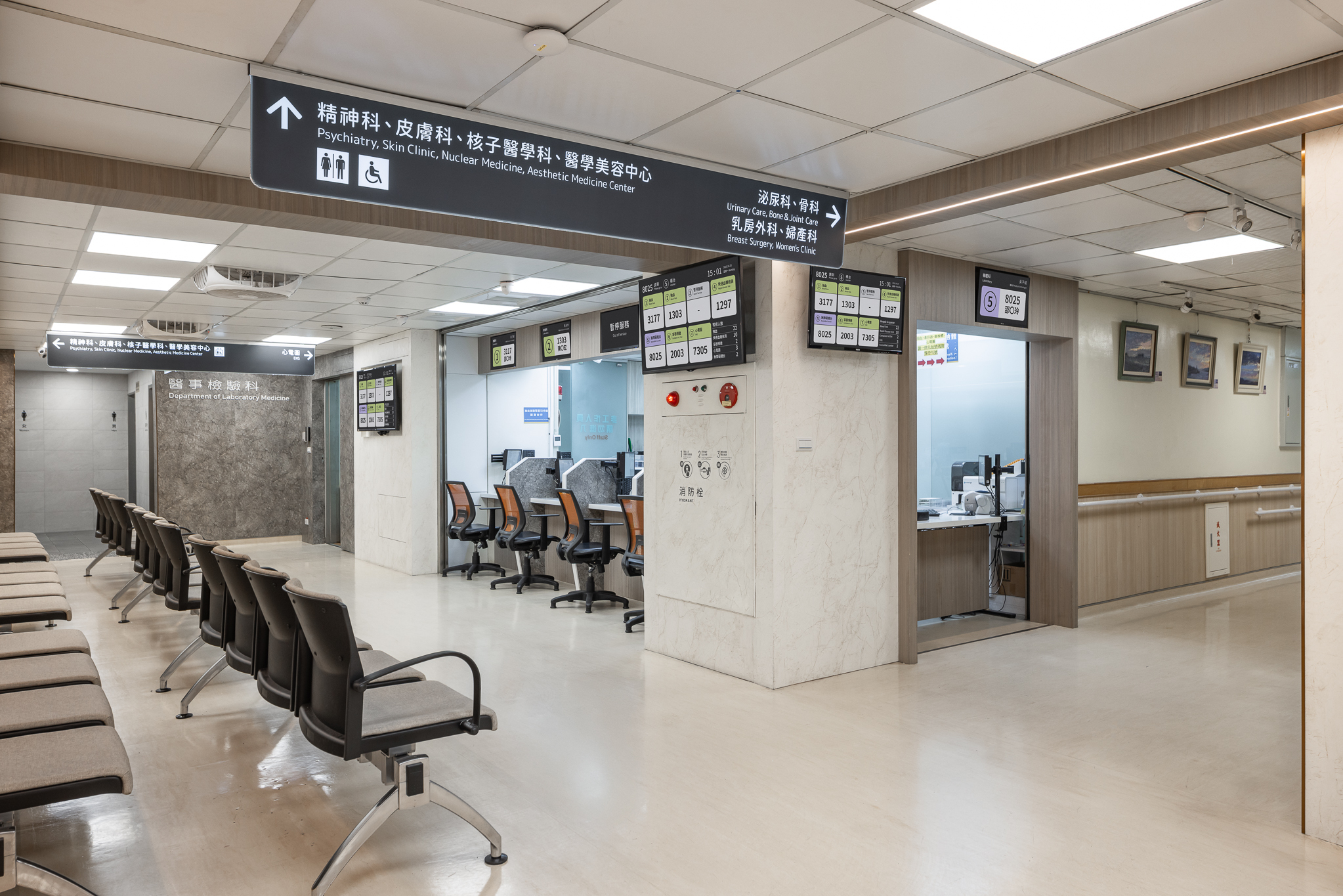
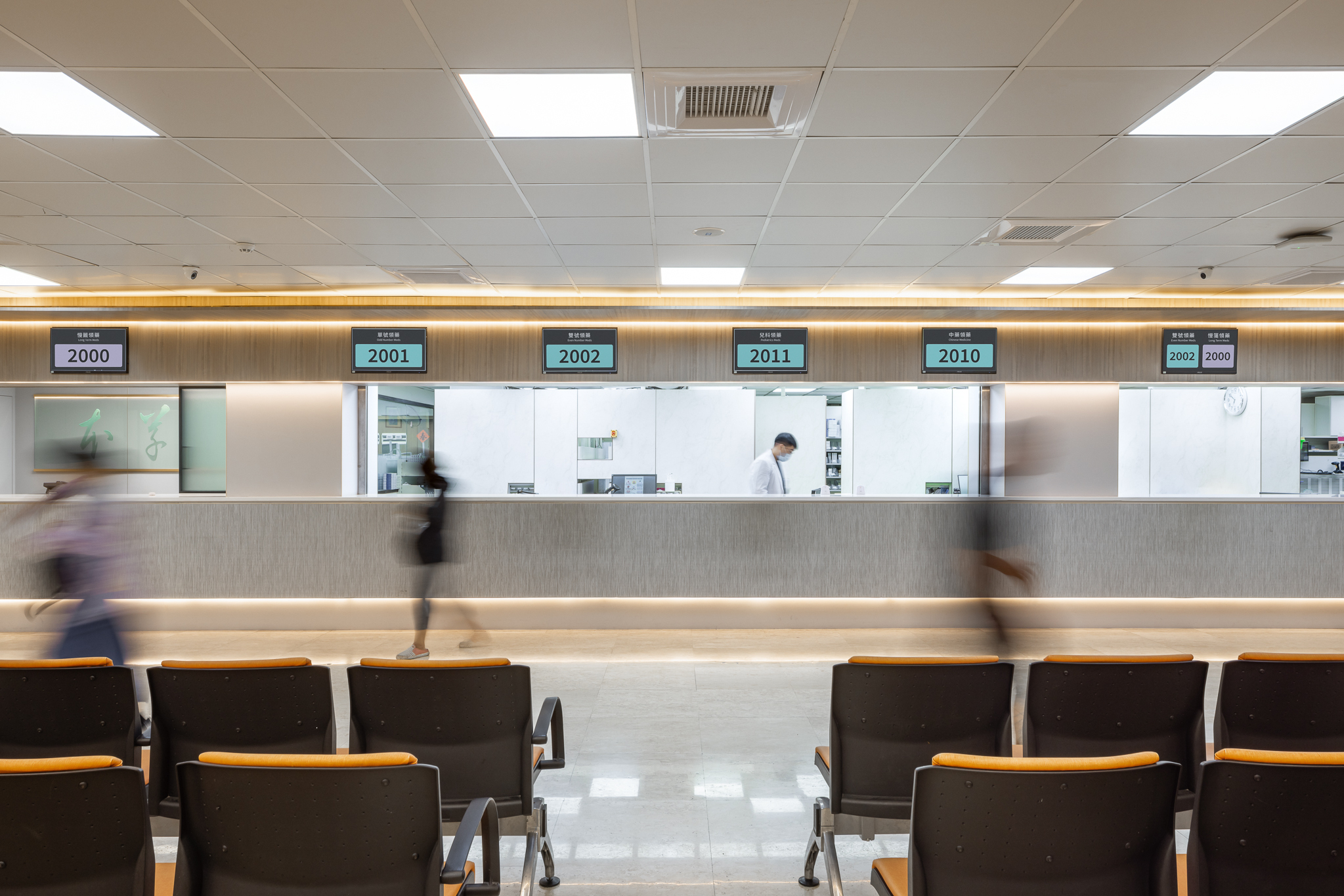 ▲ After: Digital interfaces and physical signage are visually and functionally aligned.
▲ After: Digital interfaces and physical signage are visually and functionally aligned.
From Demonstration to Dissemination: Expanding the Design Impact
A satisfaction survey conducted after implementation showed that 95% of respondents were satisfied with the new wayfinding system, underscoring its positive impact.
Beyond improving navigation within Taipei Hospital, the team compiled its findings—including research data, design strategies, and signage principles—into the “Wayfinding System Demonstration Design Handbook for MOHW-Affiliated Hospitals.”
This handbook uses Taipei Hospital as a case study to provide reference standards for future hospital design and planning. It helps agencies and vendors understand design logic and common issues, promoting consistency and efficiency.
The handbook’s principles will be applied in the hospital’s new building, currently under construction. They will also serve as a model for other hospitals under the Hospital and Social Welfare Organizations Administration Commission, advancing public healthcare environments toward greater clarity, accessibility, and user-friendliness. (The Demonstration Design Handbook is available on the Taiwan Design Research Institute website.)
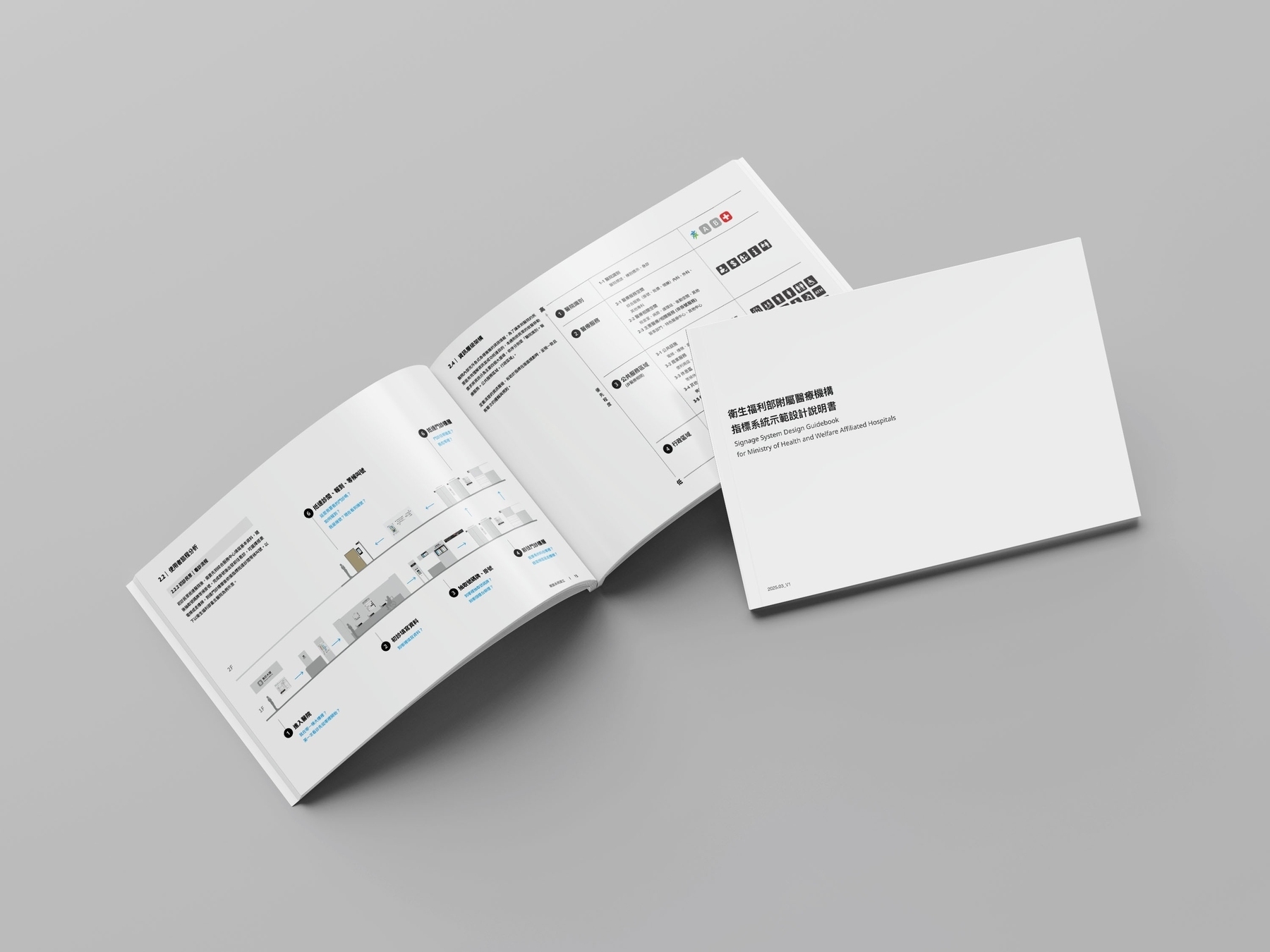 ▲ The Demonstration Design Handbook compiles hospital wayfinding design principles for future reference and application by other institutions.
▲ The Demonstration Design Handbook compiles hospital wayfinding design principles for future reference and application by other institutions.
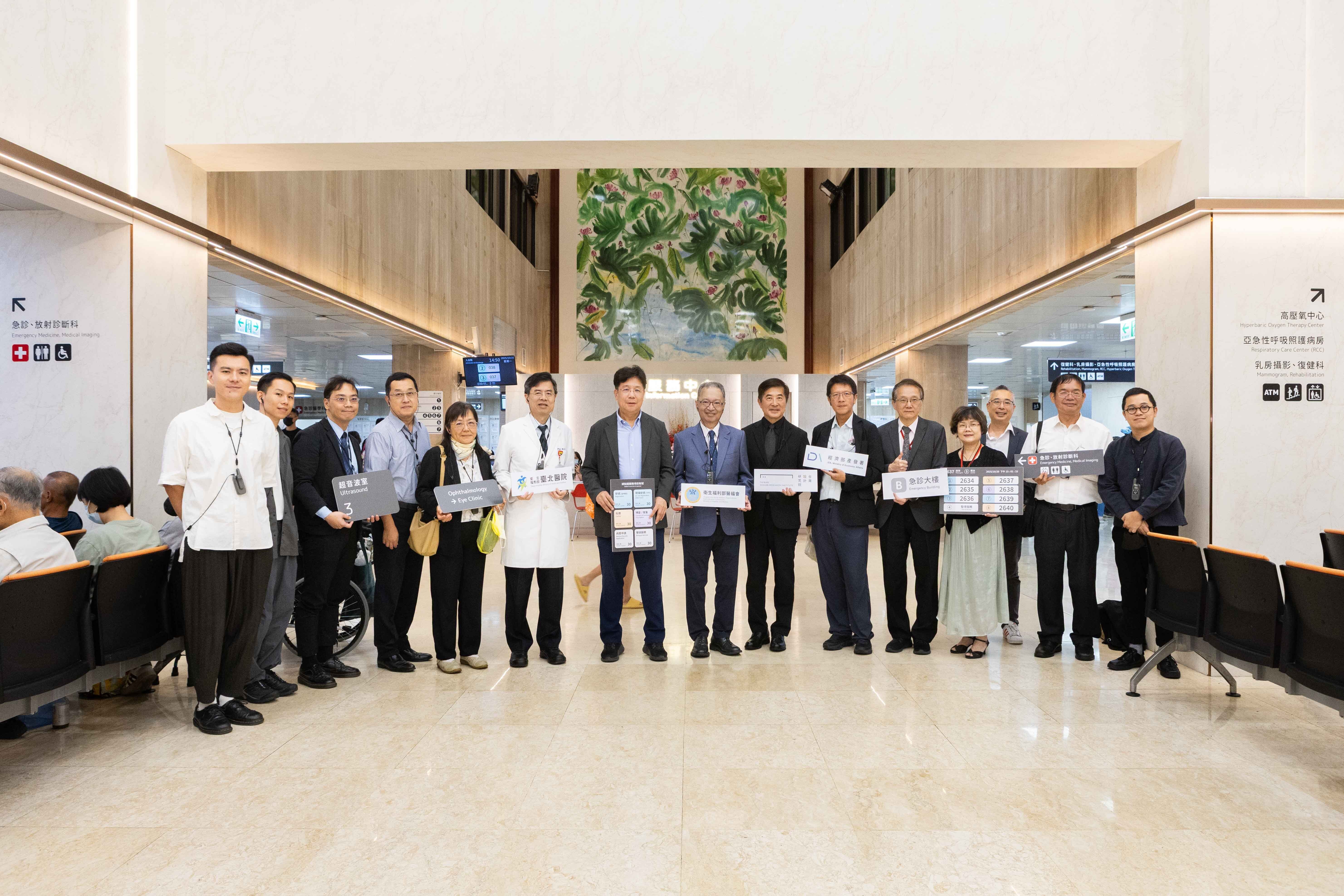 ▲ The demonstration design was first implemented at Taipei Hospital, to gradually expand to other medical institutions in the future.
▲ The demonstration design was first implemented at Taipei Hospital, to gradually expand to other medical institutions in the future.
 ▲ The new Taipei Hospital building, currently under construction, will adopt the demonstrated design solutions. (Image courtesy of HCJ Architects & Associates.)
▲ The new Taipei Hospital building, currently under construction, will adopt the demonstrated design solutions. (Image courtesy of HCJ Architects & Associates.)
Organizer: Department of Industrial Development, Ministry of Economic Affairs
Executor: Taiwan Design Research Institute
Co-Creators: Hospital and Social Welfare Organizations Administration Commission, Ministry of Health and Welfare; Taipei Hospital
Consultants: Spatial Design Consultant / Zhao Shi; Information Design Consultant / David Chen; Signage Design Consultant / Ting Chuan-Wei; Hospital Communication Design Consultant / Feng Yu
Design Planning: Elephant Design
Project Coordination & Design Research: Public Service Design Division, Taiwan Design Research Institute
Photography: Yuchen Chao Photography